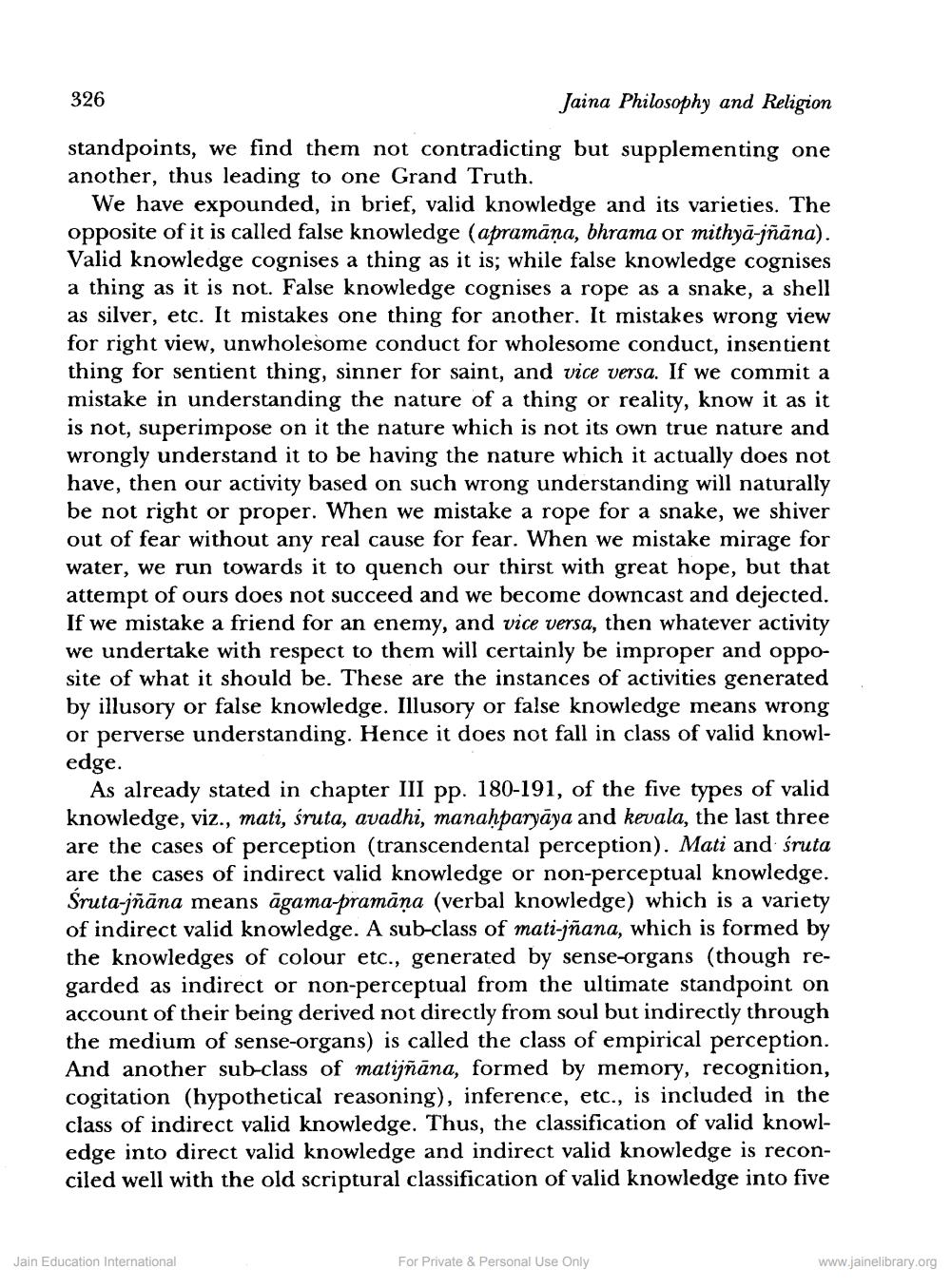________________
326
Jaina Philosophy and Religion
standpoints, we find them not contradicting but supplementing one another, thus leading to one Grand Truth.
We have expounded, in brief, valid knowledge and its varieties. The opposite of it is called false knowledge (apramāna, bhrama or mithyā-jñāna). Valid knowledge cognises a thing as it is; while false knowledge cognises a thing as it is not. False knowledge cognises a rope as a snake, a shell as silver, etc. It mistakes one thing for another. It mistakes wrong view for right view, unwholesome conduct for wholesome conduct, insentient thing for sentient thing, sinner for saint, and vice versa. If we commit a mistake in understanding the nature of a thing or reality, know it as it is not, superimpose on it the nature which is not its own true nature and wrongly understand it to be having the nature which it actually does not have, then our activity based on such wrong understanding will naturally be not right or proper. When we mistake a rope for a snake, we shiver out of fear without any real cause for fear. When we mistake mirage for water, we run towards it to quench our thirst with great hope, but that attempt of ours does not succeed and we become downcast and dejected. If we mistake a friend for an enemy, and vice versa, then whatever activity we undertake with respect to them will certainly be improper and opposite of what it should be. These are the instances of activities generated by illusory or false knowledge. Illusory or false knowledge means wrong or perverse understanding. Hence it does not fall in class of valid knowledge.
As already stated in chapter III pp. 180-191, of the five types of valid knowledge, viz., mati, śruta, avadhi, manahparyāya and kevala, the last three are the cases of perception (transcendental perception). Mati and śruta are the cases of indirect valid knowledge or non-perceptual knowledge. Sruta-jñāna means āgama-pramāņa (verbal knowledge) which is a variety of indirect valid knowledge. A sub-class of mati-jñana, which is formed by the knowledges of colour etc., generated by sense-organs (though regarded as indirect or non-perceptual from the ultimate standpoint on account of their being derived not directly from soul but indirectly through the medium of sense-organs) is called the class of empirical perception. And another sub-class of matijñāna, formed by memory, recognition, cogitation (hypothetical reasoning), inference, etc., is included in the class of indirect valid knowledge. Thus, the classification of valid knowledge into direct valid knowledge and indirect valid knowledge is reconciled well with the old scriptural classification of valid knowledge into five
Jain Education International
For Private & Personal Use Only
www.jainelibrary.org




